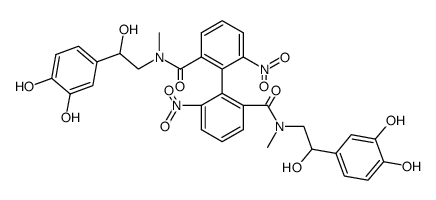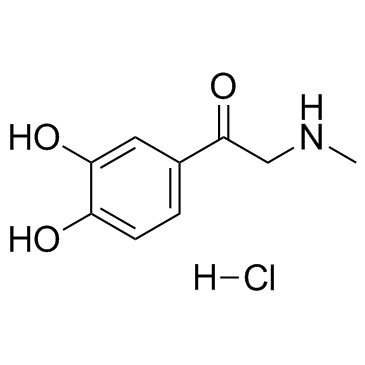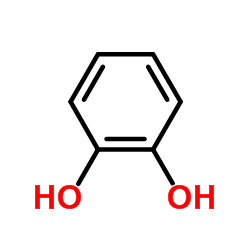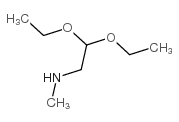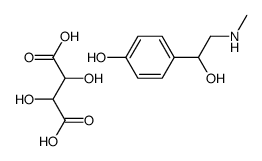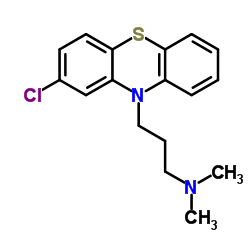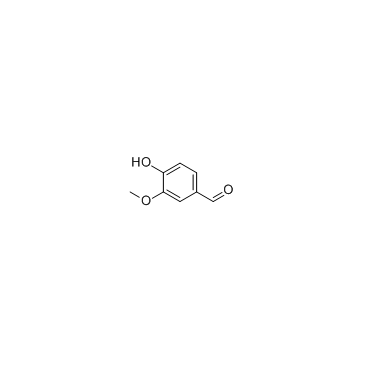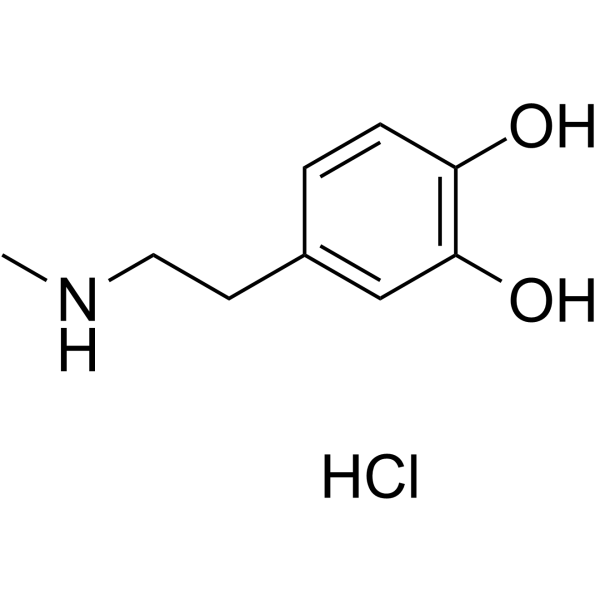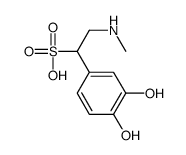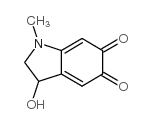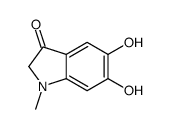329-65-7
| 中文名 | 消旋肾上腺素 |
|---|---|
| 英文名 | adrenaline |
| 中文别名 |
3,4-二羟基-Α-(甲基氨基)苯甲醇
(±)肾上腺素 DL-肾上腺素 1-(3,4-二羟基苯基)-2-(甲基氨基)乙醇 |
| 英文别名 |
EINECS 206-347-6
4-[1-Hydroxy-2-(methylamino)ethyl]benzene-1,2-diol 4-(1-Hydroxy-2-(methylamino)ethyl)benzene-1,2-diol 1,2-Benzenediol, 4-[1-hydroxy-2-(methylamino)ethyl]- dl-Epinephrine Epinephrine dl- adrenaline rac Epinephrine MFCD00063027 1-1-(3,4-Dihydroxyphenyl)-2-methylaminoethanol (±)-3,4-Dihydroxy-a-[(methylamino)methyl]benzyl Alcohol (±)-Epinephrine Drenamist UNII:GR0L9S3J0F (±)-Adrenaline 4-(1-Hydroxy-2-(methylamino)ethyl)-1,2-benzenediol 4-[1-Hydroxy-2-(methylamino)ethyl]-1,2-benzenediol DL-Adrenalin Benzyl alcohol, 3,4-dihydroxy-α-((methylamino)methyl)-, (-)- (±)-4-[1-Hydroxy-2-(methylamino)ethyl]-1,2-benzenediol (±)-4-(1-Hydroxy-2-(methylamino)ethyl)-1,2-benzenediol 1,2-Benzenediol, 4-(1-hydroxy-2-(methylamino)ethyl)- Epinephrin Racepinephrine Racemic epinephrine Asthmanefrin |
| 描述 | DL-Epinephrine是肾上腺素的消旋体。L-Epinephrine是由肾上腺髓质分泌的激素。它是α-adrenergic和β-adrenergic受体激动剂。 |
|---|---|
| 相关类别 | |
| 体内研究 | 与未处理的对照眼相比,将12微升体积的1%L-肾上腺素硼酸盐溶液施用于12只猴子的一只眼睛的角膜上,分别使通过虹膜和睫状体的血流减少59%和20%[ 1]。肾上腺素是一种直接作用的拟交感神经药α-肾上腺素能和β-肾上腺素能激动剂,具有环腺苷一磷酸介导的,复杂的,对许多靶器官的双向药理作用[2]。在年轻成年大鼠中,肾上腺素的内源性释放促进了对于时间相关事件的稳定记忆形成。肾上腺素通过增加调节记忆所需的血糖水平来增强年轻成年大鼠的记忆[3]。肾上腺素是心肺复苏(CPR)期间用于逆转心脏骤停的主要药物。肾上腺素通过α-1-肾上腺素能受体激动剂作用增加CPR期间的动脉血压和冠状动脉灌注[4]。 |
| 动物实验 | 大鼠:对于免疫组织化学实验,大鼠接受培训后立即皮下注射生理盐水(0.9%),葡萄糖(250 mg / kg)或肾上腺素(0.1 mg / kg),然后返回保持笼[3] 。 |
| 参考文献 |
[4]. Callaway CW, et al. Epinephrine for cardiac arrest. Curr Opin Cardiol. 2013 Jan;28(1):36-42. |
| 密度 | 1.3±0.1 g/cm3 |
|---|---|
| 沸点 | 413.1±40.0 °C at 760 mmHg |
| 熔点 | 197 °C (dec.)(lit.) |
| 分子式 | C9H13NO3 |
| 分子量 | 183.204 |
| 闪点 | 207.9±17.9 °C |
| 精确质量 | 183.089539 |
| PSA | 72.72000 |
| LogP | -0.63 |
| 外观性状 | 无气味的淡棕色或几乎白色晶体 |
| 蒸汽压 | 0.0±1.0 mmHg at 25°C |
| 折射率 | 1.608 |
| 储存条件 | 密封避光保存。 |
| 水溶解性 | Sparingly soluble |
| 分子结构 | 1、 摩尔折射率:49.33 2、 摩尔体积(m3/mol):142.6 3、 等张比容(90.2K):397.0 4、 表面张力(dyne/cm):59.9 5、 极化率(10 -24cm 3):19.55 |
| 更多 | 1. 性状:白色结晶。 2. 密度(g/mL,25/4℃): 未确定 3. 相对蒸汽密度(g/mL,空气=1):未确定 4. 熔点(ºC):230(分解) 5. 沸点(ºC,常压):未确定 6. 沸点(ºC,5.2kPa):未确定 7. 折射率:未确定 8. 闪点(ºC):未确定 9. 比旋光度(º):未确定 10. 自燃点或引燃温度(ºC):未确定 11. 蒸气压(kPa,25ºC): 未确定 12. 饱和蒸气压(kPa,60ºC): 未确定 13. 燃烧热(KJ/mol):未确定 14. 临界温度(ºC):未确定 15. 临界压力(KPa):未确定 16. 油水(辛醇/水)分配系数的对数值: 17. 爆炸上限(%,V/V):未确定 18. 爆炸下限(%,V/V):未确定 19. 溶解性:溶于乙酸、矿酸和碱液,微溶于水和乙醇。 |
|
Section I.Chemical Product and Company Identification Chemical Name DL-Adrenaline Portland OR SynonymDL-Epinephrine Chemical FormulaC9H13NO3 CAS Number329-65-7 Section II.Composition and Information on Ingredients Toxicology Data Chemical NameCAS Number Percent (%)TLV/PEL DL-Adrenaline329-65-7Min. 98.0 (T) Not available.Rat LD50 (intravenous) 0.07 mg/kg Mouse LD50 (intraperitoneal) 7.8 mg/kg Mouse LD50 (intravenous) 3.4 mg/kg Section III. Hazards Identification Acute Health EffectsToxic if ingested or inhaled. Avoid prolonged contact with this material. Overexposure may result in serious illness or death. Irritating to eyes and skin on contact. Inhalation causes irritation of the lungs and respiratory system. Inflammation of the eye is characterized by redness, watering, and itching. Skin inflammation is characterized by itching, scaling, reddening, or, occasionally, blistering. Follow safe industrial hygiene practices and always wear proper protective equipment when handling this compound. Chronic Health EffectsCARCINOGENIC EFFECTS : Not available. MUTAGENIC EFFECTS : Not available. TERATOGENIC EFFECTS : Not available. DEVELOPMENTAL TOXICITY: Not available. Repeated exposure to an highly toxic material may produce general deterioration of health by an accumulation in one or many human organs. Section IV.First Aid Measures Check for and remove any contact lenses. In case of contact, immediately flush eyes with plenty of water for at least 15 Eye Contact minutes. Get medical attention. In case of contact, immediately flush skin with plenty of water for at least 15 minutes while removing contaminated clothing Skin Contact and shoes. Wash clothing before reuse. Thoroughly clean shoes before reuse. Get medical attention immediately. If the victim is not breathing, perform mouth-to-mouth resuscitation. Loosen tight clothing such as a collar, tie, belt or Inhalation waistband. If breathing is difficult, oxygen can be administered. Seek medical attention if respiration problems do not improve. IngestionINDUCE VOMITING by sticking finger in throat. Lower the head so that the vomit will not reenter the mouth and throat. Loosen tight clothing such as a collar, tie, belt or waistband. If the victim is not breathing, perform mouth-to-mouth resuscitation. Examine the lips and mouth to ascertain whether the tissues are damaged, a possible indication that the toxic material was ingested; the absence of such signs, however, is not conclusive. Section V.Fire and Explosion Data Not available. May be combustible at high temperature.Auto-Ignition Flammability Flash PointsFlammable LimitsNot available. Not available. Combustion ProductsThese products are toxic carbon oxides (CO, CO2), nitrogen oxides (NO, NO2). Fire Hazards Not available. Risks of explosion of the product in presence of mechanical impact: Not available. Explosion Hazards Risks of explosion of the product in presence of static discharge: Not available. Fire Fighting Media and Instructions Continued on Next Page DL-Adrenaline SMALL FIRE: Use DRY chemical powder. LARGE FIRE: Use water spray, fog or foam. DO NOT use water jet. Consult with local fire authorities before attempting large scale fire-fighting operations. Section VI.Accidental Release Measures Spill CleanupToxic material. Teratogenic material. Irritating material. Light sensitive material. Heat sensitive material. Stop leak if without risk. DO NOT get water inside container. DO NOT touch spilled material. Use water spray to reduce Instructions vapors. Prevent entry into sewers, basements or confined areas; dike if needed. Eliminate all sources of ignition. Consult federal, state, and/or local authorities for assistance on disposal. Section VII. Handling and Storage TOXIC. TERATOGEN. IRRITANT. LIGHT SENSITIVE. HEAT SENSITIVE. REFRIGERATE. Keep locked up. Keep away Handling and Storage from heat. Mechanical exhaust required. When not in use, tightly seal the container and store in a dry, cool place. Avoid Information excessive heat and light. DO NOT ingest. Do not breathe dust. Wear suitable protective clothing. If ingested, seek medical advice immediately and show the container or the label. Treat symptomatically and supportively. Always store away from incompatible compounds such as oxidizing agents, acids. Section VIII. Exposure Controls/Personal Protection Use process enclosures, local exhaust ventilation, or other engineering controls to keep airborne levels below recommended Engineering Controls exposure limits. If user operations generate dust, fume or mist, use ventilation to keep exposure to airborne contaminants below the exposure limit. Splash goggles. Lab coat. Dust respirator. Boots. Gloves. A MSHA/NIOSH approved respirator must be used to avoid Personal Protection inhalation of the product. Suggested protective clothing might not be sufficient; consult a specialist BEFORE handling this product. Exposure LimitsNot available. Section IX. Physical and Chemical Properties Solid. (Crystal, powder. Pale yellow -Solubility Physical state @ 20°CNot available. greyish yellow red.) Not available. Specific Gravity Molecular Weight183.20Partition CoefficientNot available. Boiling PointNot available.Not applicable. Vapor Pressure Melting Point197°C (386.6°F)Vapor DensityNot available. Not available.Not available. Refractive IndexVolatility Critical TemperatureNot available.OdorNot available. Not available.Not available. ViscosityTaste Section X.Stability and Reactivity Data This material is stable if stored under proper conditions. (See Section VII for instructions) Stability Conditions of InstabilityAvoid excessive heat and light. IncompatibilitiesReactive with oxidizing agents, acids, acid chlorides, acid anhydrides. Section XI. Toxicological Information RTECS NumberDO2975000 Eye Contact. Ingestion. Inhalation. Routes of Exposure Rat LD50 (intravenous) 0.07 mg/kg Toxicity Data Mouse LD50 (intraperitoneal) 7.8 mg/kg Mouse LD50 (intravenous) 3.4 mg/kg CARCINOGENIC EFFECTS : Not available. Chronic Toxic Effects MUTAGENIC EFFECTS : Not available. TERATOGENIC EFFECTS : Not available. DEVELOPMENTAL TOXICITY: Not available. Repeated exposure to an highly toxic material may produce general deterioration of health by an accumulation in one or many human organs. Toxic if ingested or inhaled. Avoid prolonged contact with this material. Overexposure may result in serious illness or death. Acute Toxic Effects Irritating to eyes and skin on contact. Inhalation causes irritation of the lungs and respiratory system. Inflammation of the eye is characterized by redness, watering, and itching. Skin inflammation is characterized by itching, scaling, reddening, or, occasionally, blistering. Follow safe industrial hygiene practices and always wear proper protective equipment when handling this compound. Continued on Next Page DL-Adrenaline Section XII.Ecological Information EcotoxicityNot available. Not available. Environmental Fate Section XIII. Disposal Considerations Recycle to process, if possible. Consult your local regional authorities. You may be able to dissolve or mix material with a Waste Disposal combustible solvent and burn in a chemical incinerator equipped with an afterburner and scrubber system. Observe all federal, state and local regulations when disposing of the substance. Section XIV. Transport Information DOT ClassificationDOT CLASS 6.1: Toxic material. PIN Number Proper Shipping NameToxic solid, organic, n.o.s. II Packing Group (PG) DOT Pictograms Section XV. Other Regulatory Information and Pictograms TSCA Chemical InventoryThis product is NOT on the EPA Toxic Substances Control Act (TSCA) inventory. The following notices are required by 40 CFR 720.36 (C) for those products not on the inventory list: (EPA) (i) These products are supplied solely for use in research and development by or under the supervision of a technically qualified individual as defined in 40 CFR 720.0 et sec. (ii) The health risks of these products have not been fully determined. Any information that is or becomes available will be supplied on an MSDS sheet. WHMIS ClassificationCLASS D-1B: Material causing immediate and serious toxic effects (TOXIC). On DSL. (Canada) EINECS Number (EEC) 206-347-6 EEC Risk StatementsR23/24/25- Toxic by inhalation, in contact with skin and if swallowed. R36/37/38- Irritating to eyes, respiratory system and skin. SECTION 16 - ADDITIONAL INFORMATION N/A |
|
毒理学数据: 二、毒理学数据: 急性毒性:不可用。 生态学数据: 三、生态学数据: 1、其它有害作用:该物质对环境可能有危害,对水体应给予特别注意。 CHEMICAL IDENTIFICATION
HEALTH HAZARD DATAACUTE TOXICITY DATA
|
| 危害码 (欧洲) | T:Toxic; |
|---|---|
| 风险声明 (欧洲) | R24;R36/37/38 |
| 安全声明 (欧洲) | S26-S36/37-S45 |
| 危险品运输编码 | UN 2811 6.1/PG 2 |
| WGK德国 | 3 |
| RTECS号 | DO2975000 |
| 包装等级 | III |
| 危险类别 | 6.1(b) |
| 海关编码 | 2922509090 |
|
~% 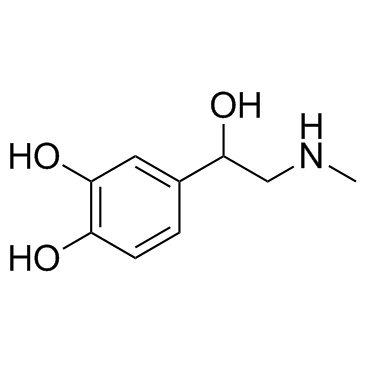
329-65-7 |
| 文献:DE524717 , ; Fortschr. Teerfarbenfabr. Verw. Industriezweige, vol. 17, p. 2515 |
|
~55% 
329-65-7 |
| 文献:Muller; Keil; Gerhard Tetrahedron, 1986 , vol. 42, # 5 p. 1529 - 1532 |
|
~% 
329-65-7 |
| 文献:Tetrahedron, , vol. 42, # 5 p. 1529 - 1532 |
|
~% 
329-65-7 |
| 文献:Tetrahedron, , vol. 42, # 5 p. 1529 - 1532 |
|
~% 
329-65-7 |
| 文献:Annali di Chimica (Rome, Italy), , vol. 41, p. 711,713 Zhurnal Obshchei Khimii, , vol. 28, p. 2530,2536 J. Gen. Chem. USSR (Engl. Transl.), , vol. 28, p. 2566,2570 |
|
~% 
329-65-7 |
| 文献:Chemische Berichte, , vol. 56, p. 855 DE360607 ; Fortschr. Teerfarbenfabr. Verw. Industriezweige, vol. 14, p. 1277 DE373286 ; Fortschr. Teerfarbenfabr. Verw. Industriezweige, vol. 14, p. 1278 |
|
~% 
329-65-7 |
| 文献:Tetrahedron, , vol. 47, # 27 p. 5019 - 5024 |
|
~% 
329-65-7 |
| 文献:Organic and Biomolecular Chemistry, , vol. 6, # 24 p. 4609 - 4614 |
|
~% 
329-65-7 |
| 文献:Naunyn-Schmiedebergs Archiv fuer Experimentelle Pathologie und Pharmakologie, , vol. 193, p. 440,445 Pr.Soc.exp.Biol.Med., , vol. 45, p. 52 |
| 上游产品 8 | |
|---|---|
| 下游产品 10 | |
| 海关编码 | 2922509090 |
|---|---|
| 中文概述 | 2922509090. 其他氨基醇酚、氨基酸酚及其他含氧基氨基化合物. 增值税率:17.0%. 退税率:13.0%. 监管条件:AB. 最惠国关税:6.5%. 普通关税:30.0% |
| 申报要素 | 品名, 成分含量, 用途, 乙醇胺及其盐应报明色度, 乙醇胺及其盐应报明包装 |
| 监管条件 | A.入境货物通关单 B.出境货物通关单 |
| 检验检疫 | R.进口食品卫生监督检验 S.出口食品卫生监督检验 |
| Summary | 2922509090. other amino-alcohol-phenols, amino-acid-phenols and other amino-compounds with oxygen function. VAT:17.0%. Tax rebate rate:13.0%. . MFN tariff:6.5%. General tariff:30.0% |



